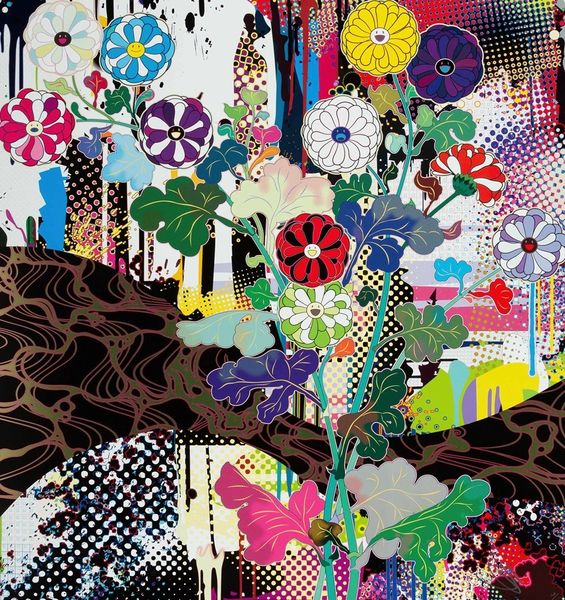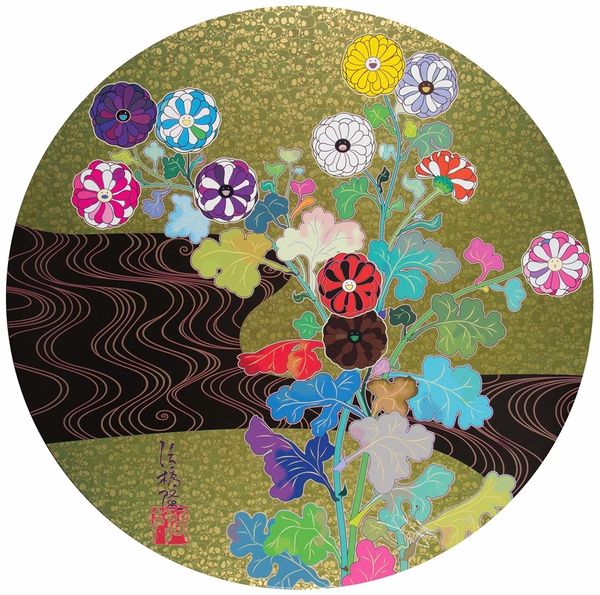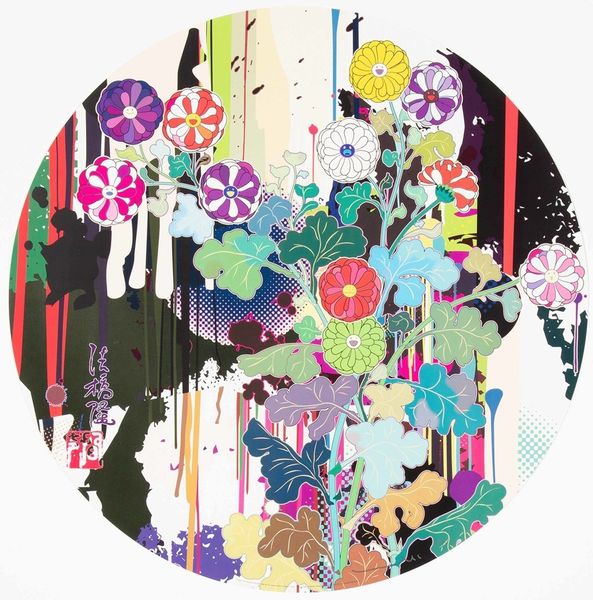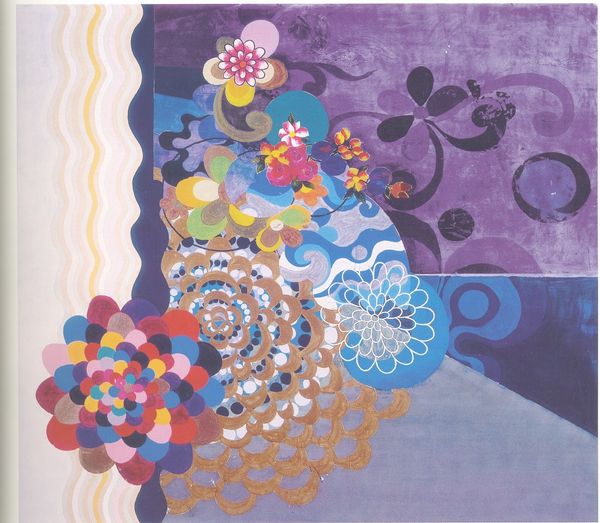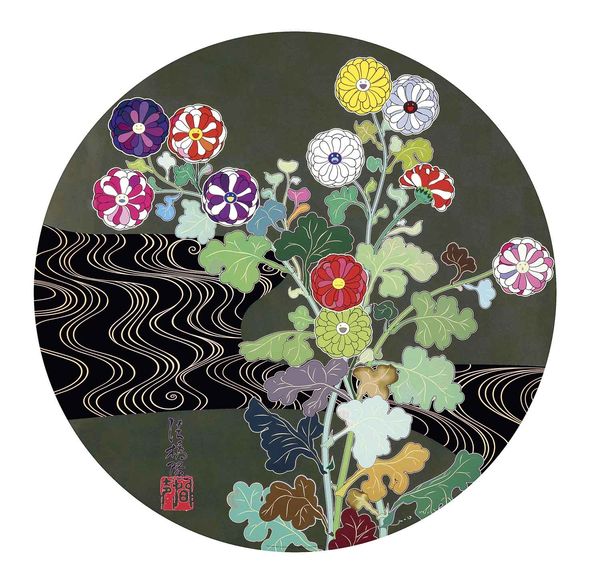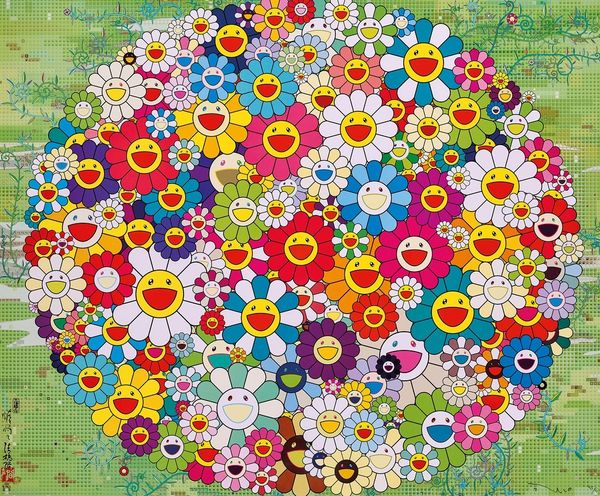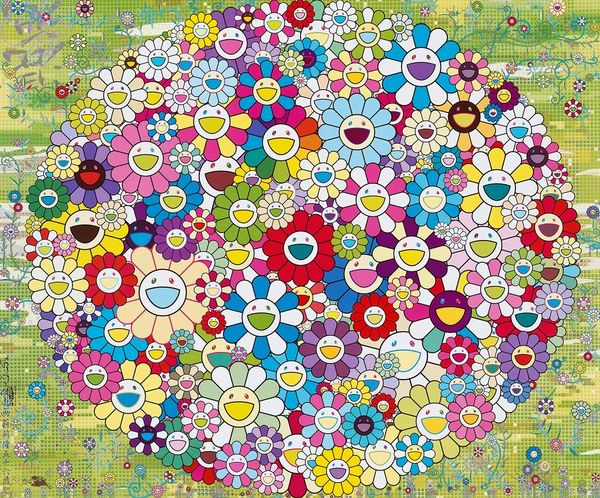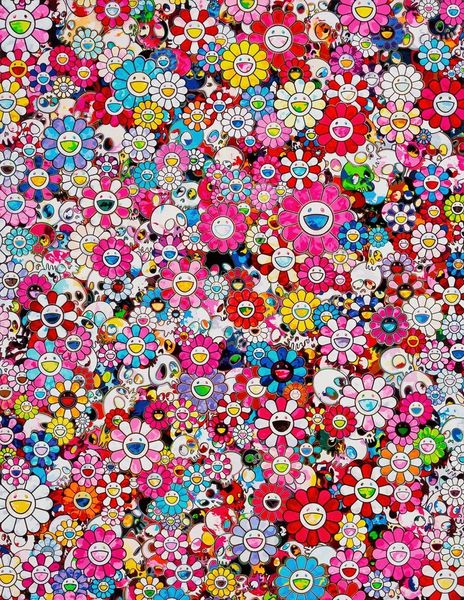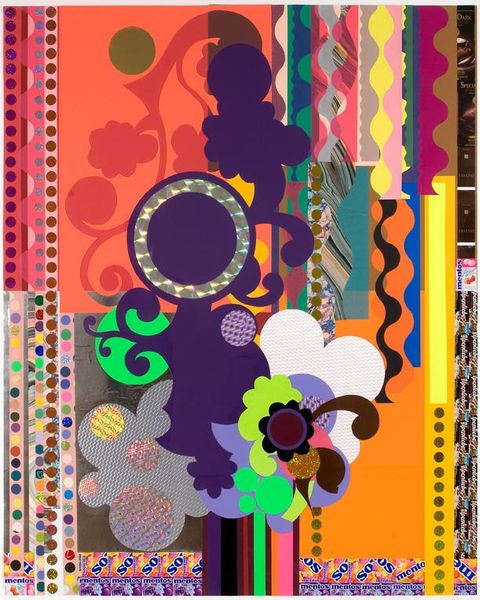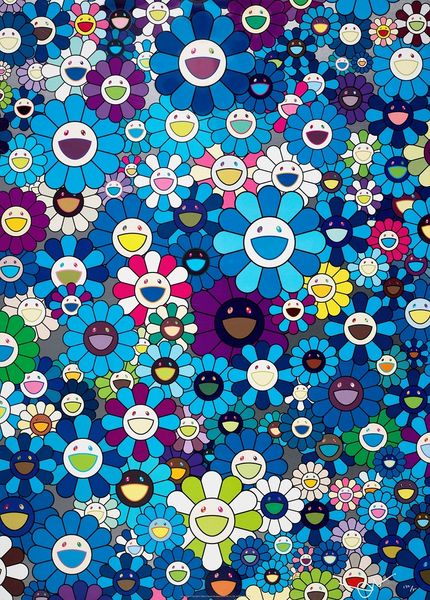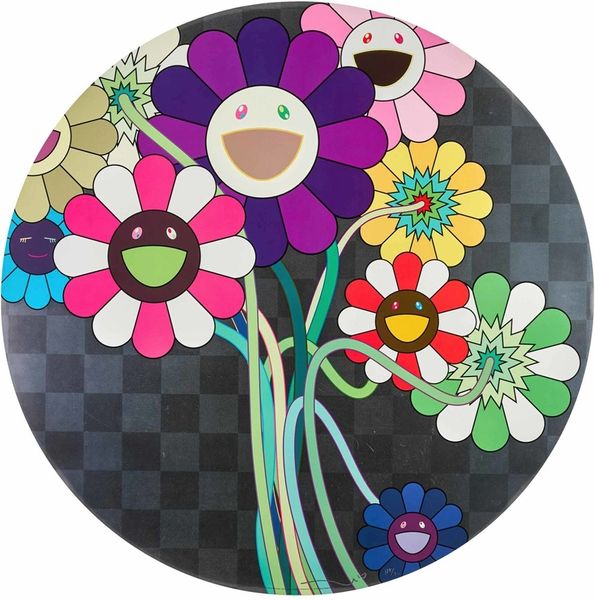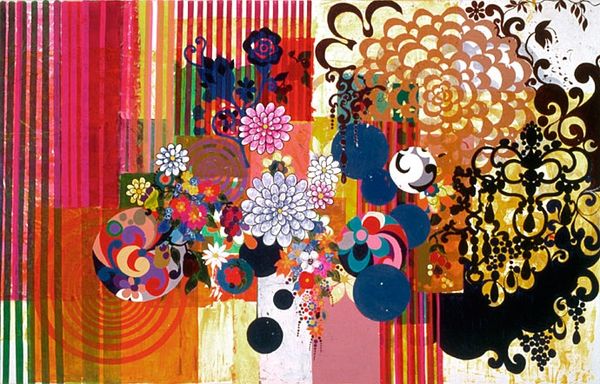
#
neo-pop
Copyright: Modern Artists: Artvee
Editor: We’re looking at Takashi Murakami’s “Korin; Courtley Elegance” from 2016, a mixed-media piece incorporating painting and prints. The overall effect is quite vibrant and almost dizzying. What strikes you most when you look at this artwork? Curator: Well, initially it presents itself as playful, typical of Murakami’s pop aesthetic. But considering its title referencing Korin, a classical Japanese artist, it enters into a dialogue with art history and cultural appropriation. Do you think this 'courtly elegance' is sincere or satirical? Editor: I can't tell. I’m curious how that connection to Japanese art history plays out within a contemporary context. The bright colors and cartoonish flowers feel very modern. Curator: Exactly. The juxtaposition is key. Murakami positions himself, and by extension, contemporary Japanese art, within a lineage but also subverts it. These smiling flowers become almost like a logo, instantly recognizable and commodified. Is it challenging traditional notions of artistic expression in a globalized art market? Editor: So, he is intentionally using elements of traditional Japanese art to comment on consumerism and the art market? Curator: Precisely! It becomes a commentary on how tradition is repackaged and consumed in a global art world, and what that means for Japanese identity and artistic autonomy. What are your thoughts on this choice? Editor: It’s made me rethink how I perceive seemingly 'cute' or 'simple' artwork. There's so much more complexity hidden beneath the surface! Curator: Absolutely! This piece invites us to question the role of the artist in a globalized society and the socio-political implications of image-making. Editor: I see the contemporary Japanese aesthetic as a response to pop-art consumerism, tradition, and a historical view of the art market. Thank you for sharing your perspective!
Comments
No comments
Be the first to comment and join the conversation on the ultimate creative platform.
